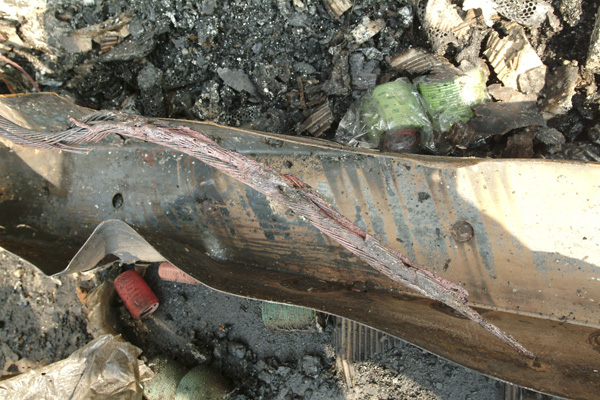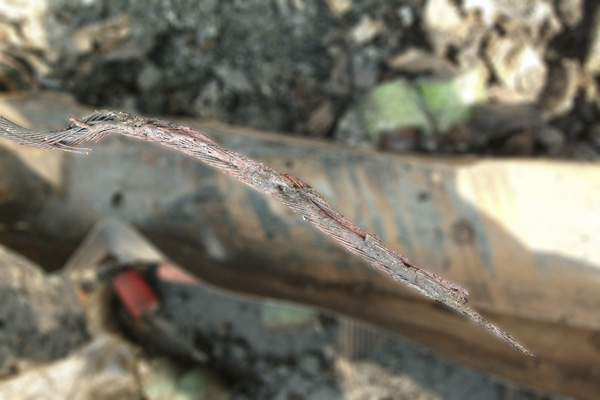I was on a fire scene last week on Thursday and as usual it was full of burnt objects and debris. It was hard to photograph something and make sure that what I wanted to have stand out in the photograph was in fact standing out. I would look at the image on the back of my camera and...debris! Just debris. So, I would get the fire investigator I was working with to hold it or some such. But I knew there is a another way to make it happen.
A handy way to make something stand out for fire investigators, insurance adjustors and forensic engineers, is to use "depth of focus". This is the fact that a lens can only focus at one distance at a time--which means what it is not focusing on is out of focus.
Okay, sounds obvious, but here's the point: if you use a small aperature (small opening) for the shutter, it focuses deeper--ie, things at different distances will be in focus. If you use a wider aperature (wider opening) you get more of only that thing you are focusing on in focus. This makes it stand out very markedly.
In a confusing fire scene, where you want to draw attention to the thing you are interested in, set your camera to "aperature priority" (usually it is marked "A" on your dial or menu) and make the f-stop as small a number as you can (smaller number, wider opening). Then find an angle on the object that puts everything you are not interested in at a different distance than the thing you are interested in--then take the shot. It will stand out much better!
Here's an exmaple of deep focus with a small aperature in a messy scene of a very large standed cable that experienced shorting:

And here's one of wider aperature (lower number f-stop) and shallow focus:

You can see how much better it stands out with the shallow focus.
The idea is to play with this in your office or home until you get the hang of it and just try it at the fire scene when you want something to stand out.
Derek Geer
Forensic Engineer / Expert Witness
San Diego, California
www.geers.comLabels: California, Camera Focus, Expert witness, Forensic Engineering, San Diego



